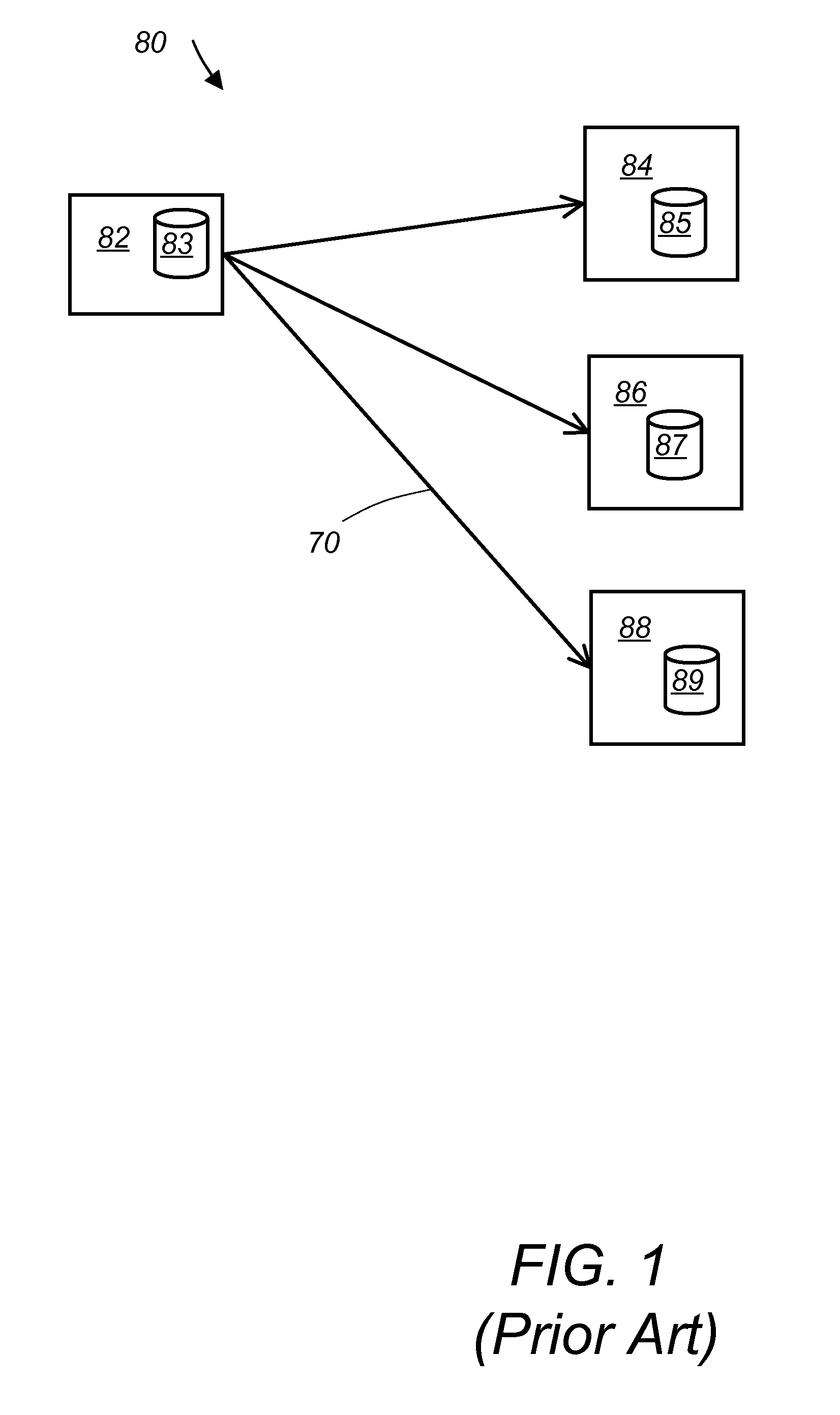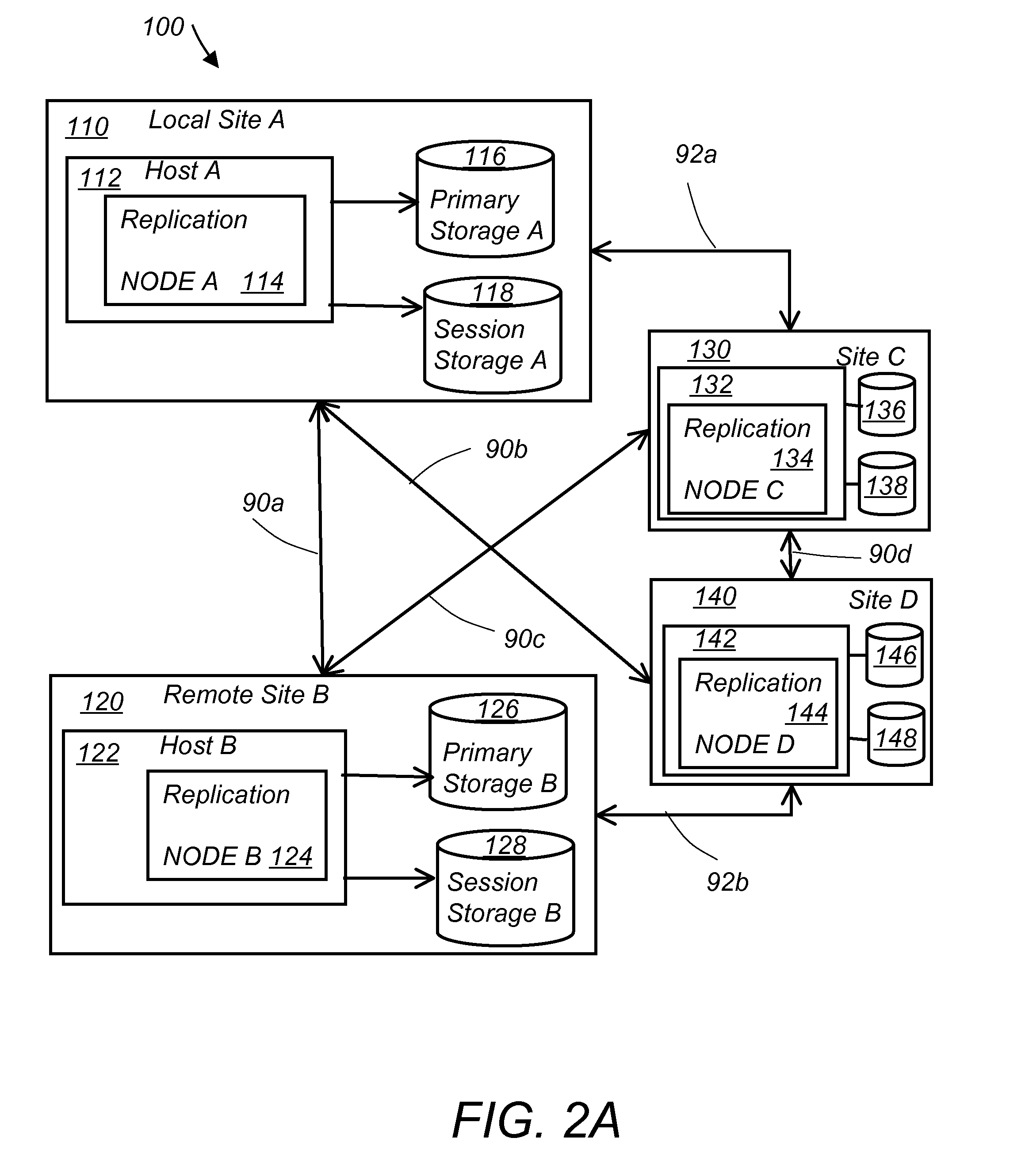System and method for remote asynchronous data replication
a data replication and remote asynchronous technology, applied in the field of remote asynchronous peertopeer data replication, can solve the problems of increasing the risk of loss, reducing and causing huge loss, so as to reduce the cost, without increasing the bandwidth requirements of the primary si
- Summary
- Abstract
- Description
- Claims
- Application Information
AI Technical Summary
Benefits of technology
Problems solved by technology
Method used
Image
Examples
Embodiment Construction
[0035]Referring to FIG. 1, a prior art data replication system 80 utilizes a hub and spoke type topology for replicating data stored in volume 83 located in the master node 82 onto volumes 85, 87, 89, located in the client nodes 84, 86, 88, respectively. An update in the data of volume 83 of the master node 82 is usually “pushed” down to volumes 85, 87, 89 of the client nodes 84, 86, 88, respectively, via wired or wireless network connections 70. As was mentioned above, this type of data replication is limited by the bandwidth of network 70 and is usually very slow and expensive especially for synchronous type replication.
[0036]Referring to FIG. 2A, an improved data replication system 100 according to this invention utilizes a “peer-to-peer” topology for replicating data stored in primary storage 116 of a local site A onto storage systems 126, 136, 146, located in remote site B, site C and site D, respectively. Sites C and D may be in the same location as site A or other remote loca...
PUM
 Login to View More
Login to View More Abstract
Description
Claims
Application Information
 Login to View More
Login to View More - R&D
- Intellectual Property
- Life Sciences
- Materials
- Tech Scout
- Unparalleled Data Quality
- Higher Quality Content
- 60% Fewer Hallucinations
Browse by: Latest US Patents, China's latest patents, Technical Efficacy Thesaurus, Application Domain, Technology Topic, Popular Technical Reports.
© 2025 PatSnap. All rights reserved.Legal|Privacy policy|Modern Slavery Act Transparency Statement|Sitemap|About US| Contact US: help@patsnap.com



